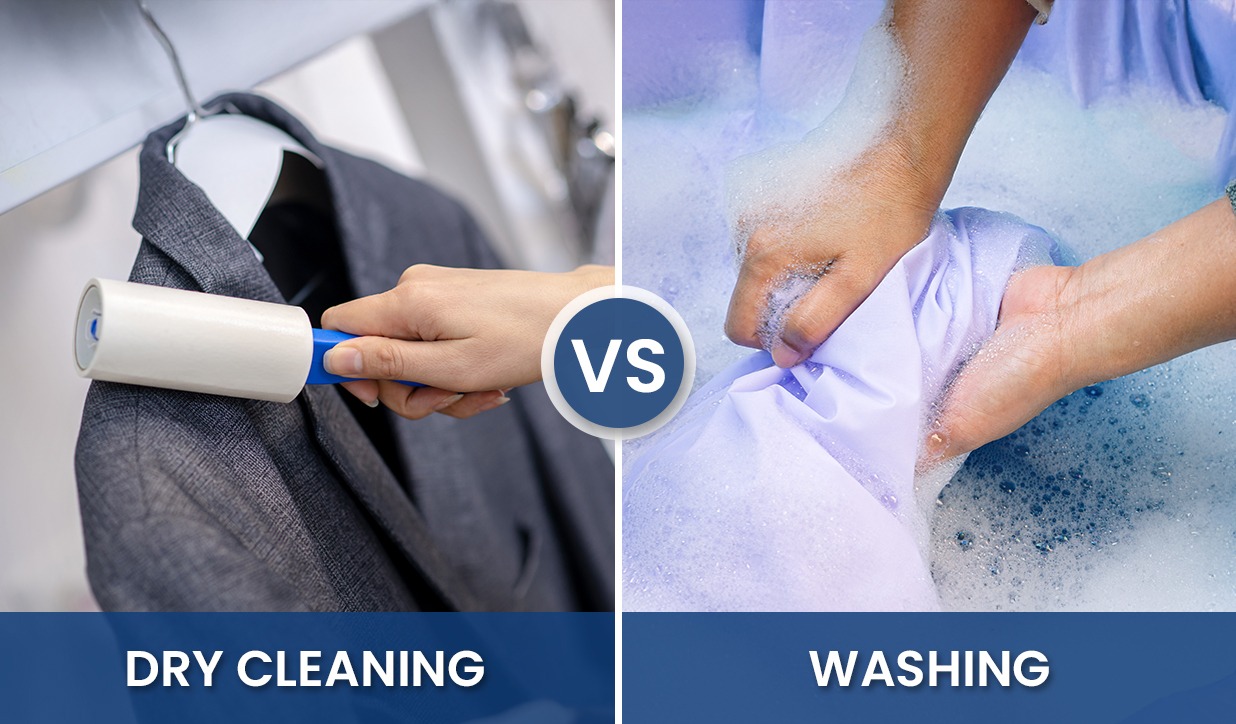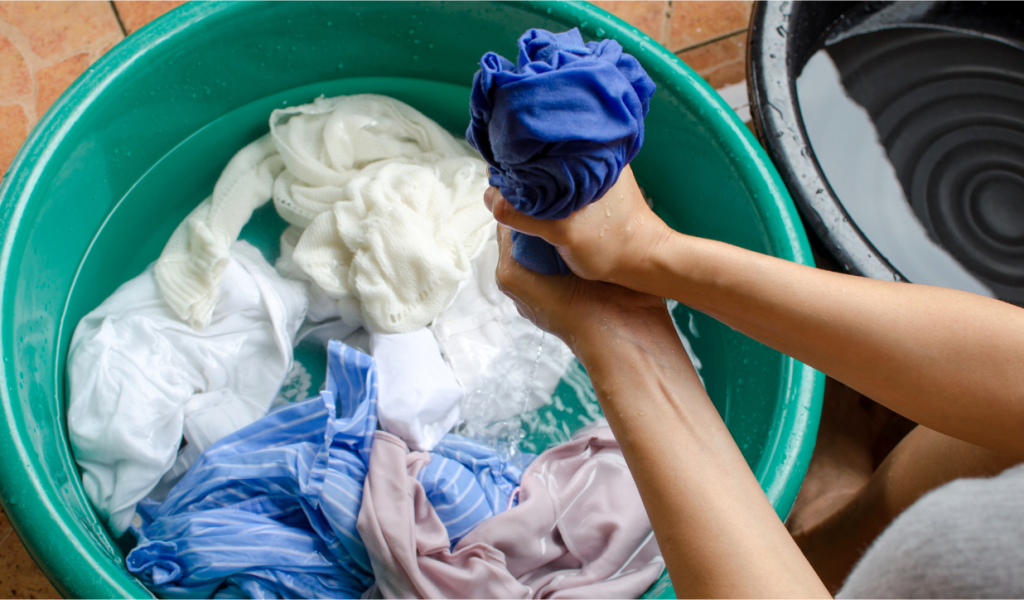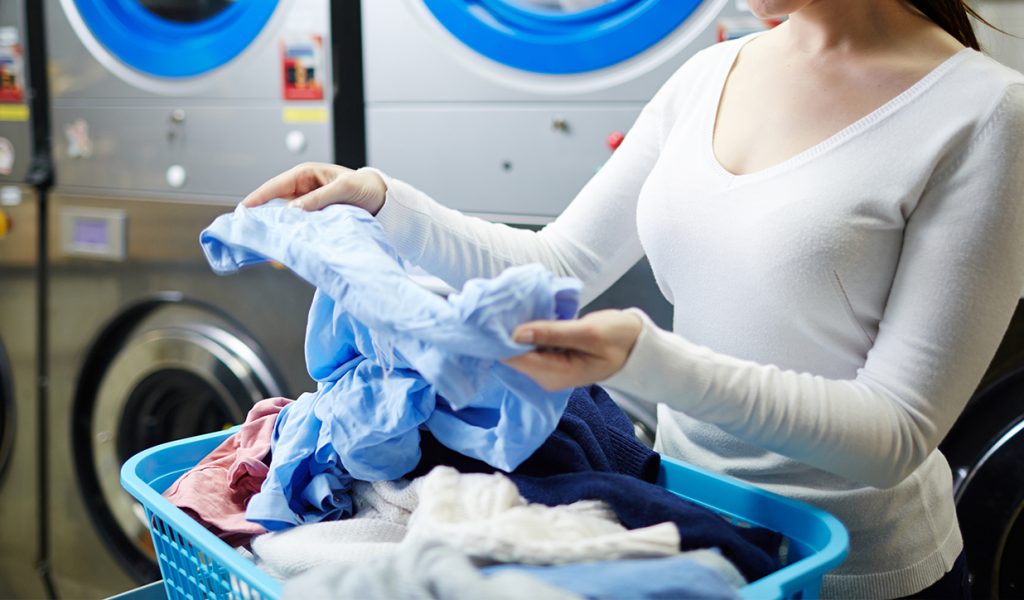Learn how to remove yellow stains from white...
Read More- Blogs
- Dry Cleaning
- Difference Between Dry Cleaning And Washing At Home
Difference Between Dry Cleaning And Washing At Home
- Riya Yadav

Did you ever wonder, which is best for your clothes: dry cleaning or washing? Well! In this blog, let’s break down the difference between dry cleaning and washing. We all want to keep our clothes for a longer time and for that we need to clean in an effective way. Both methods aim to remove dirt and stains from our clothes but to understand when to opt for dry cleaning or washing is very crucial. Dry cleaning is used for special and delicate fabrics while on the other hand, washing is used for durable fabrics. Dry Cleaning is a chemical based process which uses a solvent while washing is a water based method. In this blog, we will look into the detailed difference between: dry cleaning or washing.
What is Dry Cleaning?
Dry Cleaning is a process in which clothes are washed with the help of a solvent. This process does not use water for washing, rather it uses a solvent in which clothes are immersed which removes dirt and stains, then the solvent is removed from the garment through evaporation or distillation, providing cleaned clothes. Dry Cleaning is usually needed for delicate fabrics or fabrics with embellishment that cannot withstand water like silk, suede, wool, etc which makes it a popular choice for cleaning your fabric and expensive clothes.
Dry cleaning is typically used for delicate or special-care items, such as:
- Wool and silk garments
- Suede and leather items
- Garments with beads, sequins, or other decorative elements
- Items labeled as “dry clean only”
Read More: Does Dry Cleaning Remove Stains?
Dry Cleaning Process

Step 1: Inspection and Tagging
The garment is inspected for stains, tears, and missing buttons. A color-coded tag is attached to the garment to indicate the type of cleaning solution to be used.
Step 2: Pre-Treatment
Stains are pre-treated with a solution to help loosen the dirt. This may involve applying a stain remover to loosen the stain.
Step 3: Loading into the Machine
The garment is loaded into a dry cleaning machine, which is designed to clean delicate fabrics without water.
Step 4: Adding Cleaning Solution
A solvent, such as perchloroethylene (perc) or hydrocarbon, is pumped into the machine. The solvent is designed to remove dirt and stains from the fabric without damaging it.
Step 5: Agitation and Cleaning
The machine agitates the garment to work the solvent into the fabric. The solvent is then circulated through the machine to remove dirt and stains.
Step 6: Rinsing
The solvent is rinsed from the garment using a clean solvent. This helps to remove any remaining dirt and stains.
Step 7: Drying
The garment is dried using a combination of heat and air flow. This helps to remove any remaining solvent and prevent moisture from accumulating in the fabric.
Step 8: Finishing
The garment is pressed and shaped to restore its original appearance. This may involve using steam or heat to relax wrinkles and creases.
Step 9: Quality Control
The garment is inspected for any remaining stains or imperfections. If necessary, additional cleaning or repairs may be performed.
Step 10: Packaging and Delivery
The garment is packaged and delivered to the customer. It’s now clean, fresh, and ready to wear!
Want a professional dry cleaning?
What is Washing?
Washing refers to the process of cleaning fabrics using water and a detergent or soap. It involves immersing clothes in water, applying a cleaning agent, and then agitating or scrubbing the fabric to remove dirt and stains. The garment is then rinsed with clean water to remove any remaining dirt and soap residue. Washing can be done by hand or using a washing machine, and it’s suitable for most fabrics, including cotton, polyester, linen, and more. Regular washing helps maintain the cleanliness, freshness, and hygiene of clothes, and it’s an essential part of our daily lives. Proper washing techniques can also help extend the life of garments and keep them looking their best.
Washing is suitable for most fabrics, including:
- Cotton and linen garments
- Polyester and nylon items
- Garments labeled as “machine washable” or “hand washable”
Don’t have time to remove stains?
How to handwash clothes?

Here are the steps to hand wash your clothes:
- Sort clothes- Separate clothes into whites, colors, and delicates.
- Check labels- Ensure the garment can be hand washed.
- Prepare water- Fill a sink or basin with enough water to cover the clothes.
- Add detergent- Use a mild detergent, and add the recommended amount.
- Soak clothes- Submerge clothes in the water and let them soak for 15-30 minutes.
- Agitate clothes- Gently agitate the clothes to work the soap into the fabric.
- Massage stains- Focus on any stains, gently massaging them with your fingers.
- Rinse clothes- Drain the soapy water and rinse clothes with clean water.
- Repeat rinse- Repeat the rinse process until the water runs clear.
- Gently squeeze- Remove excess water from the clothes without wringing or twisting.
- Reshape clothes- Lay clothes flat or hang them to dry, reshaping to maintain their original form.
- Air dry- Allow clothes to air dry away from direct sunlight and heat.
How to wash clothes with a washing machine?

Here are the steps to wash clothes with a washing machine:
- Sort clothes- Separate clothes into whites, colors, and delicates.
- Check labels- Ensure the garment can be machine washed.
- Pre-treat stains- Apply stain remover or detergent directly to stains.
- Load clothes- Add sorted clothes to the washing machine drum.
- Choose cycle- Select the appropriate wash cycle.
- Set temperature- Choose the right water temperature.
- Add detergent- Measure and add the recommended amount of laundry detergent.
- Start machine- Close the lid and press the start button.
- Remove clothes- Take out the clean clothes from the washing machine.
- Dry clothes- Transfer clothes to the dryer or hang them to air dry.
Flat 20% off on 1st order-
schedule free pick up
Key Factors To Differentiate
- Segregation: Always try to separate clothes before cleaning according to fabric, color, weight, etc
- Stain Identification: Always try to find stains on your clothes and treat them accordingly.
- Stain removal: Dry cleaning is better at removing oil-based stains, while washing is better at removing water-based stains.
- Shrinkage and fabric damage: Dry cleaning can cause shrinkage and fabric damage if not done properly, while washing can cause shrinkage and fabric damage if the garment is not washed according to its care label.
- Environmental impact: Dry cleaning has a higher environmental impact than washing due to the use of solvents.
- Cost: Dry cleaning is generally more expensive than washing.
When to Choose Dry Cleaning Vs. Washing
Here are some guidelines for choosing between dry cleaning and washing:
Check the care label: Always check the care label on your garment to see if it requires dry cleaning or washing.
Delicate or special-care items: Choose dry cleaning for delicate or special-care items, such as wool, silk, suede, or leather.
Everyday garments: Choose washing for everyday garments, such as cotton, polyester, or linen.
Conclusion
Understanding the difference between dry cleaning and washing is very important so that we can keep and store our clothes properly. By choosing the right method and technique, you will not only prevent damage, shrinkage, or color fading, but will also extend the life of your clothes. So, It is better to check the care label and then choose the cleaning method accordingly.
Disclaimer: The opinions expressed in this article are those of the author. They do not necessarily purport to reflect the values or views of Tumbledry.
When To Dry Clean A Shirt?
This guide answers the common question: when to...
Read MoreHow to Remove Beer Stains from Clothes?
Pretty much any stain, no matter how minor...
Read MoreHow to Wash Dry Clean Only Clothes at
Everyone has that favorite outfit which they want...
Read MoreHow To Iron “Dry Clean Only” Clothes?
Are you also wondering that we can iron...
Read MoreHow to Find the Best Dry Cleaner?
Finding the right dry cleaner can be a...
Read MoreWhat is Dry Cleaning: Know About Its Process
Not every cloth can be washed with a...
Read More5 Tips to Keep Your Handbag Looking New
In this blog, we will see top 5...
Read MoreRisks To Consider If You Want To DIY
Doing dry cleaning at home is not everyone's...
Read MoreHow To Do Dry Cleaning At Home?
Discover the convenience of dry cleaning at home!...
Read More









